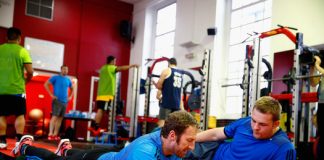When it comes to building strength, increasing muscle mass, and improving overall fitness, one principle stands above the rest: progressive overload. This foundational concept is the cornerstone of effective training programs, whether you’re a seasoned athlete or a beginner just starting your fitness journey. But what exactly is progressive overload, and why is it so crucial for achieving your fitness goals? In this comprehensive blog, we’ll dive deep into the science behind progressive overload, explore its benefits, and provide actionable tips to implement it effectively in your workouts.
What is Progressive Overload?
Progressive overload is the gradual increase of stress placed on the body during exercise training. By consistently challenging your muscles, bones, and cardiovascular system, you force your body to adapt and grow stronger over time. This principle applies to all forms of exercise, including strength training, endurance training, and even flexibility work.
The concept of progressive overload isn’t new. It dates back to ancient Greece, where Milo of Croton famously carried a growing calf every day until it became a full-grown bull. As the calf grew heavier, Milo grew stronger, embodying the essence of progressive overload.
The Science Behind Progressive Overload
To understand why progressive overload works, we need to explore the physiological mechanisms that drive adaptation in the body.
1. Muscle Hypertrophy
Muscle growth, or hypertrophy, occurs when muscle fibers are subjected to tension and stress. During resistance training, microscopic damage is caused to muscle fibers. In response, the body repairs and rebuilds these fibers, making them thicker and stronger to handle future demands. Progressive overload ensures that this process continues by consistently increasing the workload.
2. Neuromuscular Adaptation
Strength isn’t just about muscle size; it’s also about how efficiently your nervous system can recruit muscle fibers. Progressive overload trains your nervous system to activate more muscle fibers simultaneously, improving coordination and power output.
3. Bone Density and Connective Tissue Strength
Weight-bearing exercises stimulate bone remodeling, increasing bone density and reducing the risk of osteoporosis. Similarly, tendons and ligaments adapt to handle greater loads, reducing the risk of injury.
4. Metabolic Adaptations
Endurance training with progressive overload improves cardiovascular efficiency, increases mitochondrial density, and enhances the body’s ability to utilize oxygen and energy substrates.
Key Principles of Progressive Overload
To effectively apply progressive overload, you need to understand its core principles. Here are the most important factors to consider:
1. Increase Resistance
The most straightforward way to apply progressive overload is to increase the weight you’re lifting. For example, if you’re bench pressing 100 pounds for 10 reps, aim to lift 105 pounds for the same number of reps in your next session.
2. Increase Volume
Volume refers to the total amount of work performed (sets x reps x weight). Increasing volume can be achieved by adding more sets, reps, or both. For example, if you’re doing 3 sets of 10 squats at 150 pounds, you could progress to 4 sets of 10 at the same weight.
3. Increase Frequency
Training more often can also drive progress. For example, if you’re working a muscle group once a week, consider increasing it to twice a week to provide more stimulus for growth.
4. Improve Technique
Better form and technique allow you to lift more efficiently, reducing energy waste and enabling you to handle heavier loads.
5. Reduce Rest Periods
Shortening rest intervals between sets increases the intensity of your workout, challenging your cardiovascular system and muscular endurance.
6. Increase Time Under Tension (TUT)
Slowing down the tempo of your lifts increases the time your muscles are under tension, which can enhance muscle growth and strength.
Benefits of Progressive Overload
Implementing progressive overload into your training regimen offers a wide range of benefits:
- Increased Muscle Mass: By consistently challenging your muscles, you stimulate hypertrophy and growth.
- Improved Strength: Progressive overload enhances both muscular and neural strength.
- Enhanced Endurance: Gradually increasing the intensity of cardio workouts improves stamina and cardiovascular health.
- Injury Prevention: Stronger muscles, bones, and connective tissues reduce the risk of injury.
- Plateau Prevention: Progressive overload ensures continuous progress, helping you avoid fitness plateaus.
- Boosted Confidence: Seeing tangible improvements in your performance can be incredibly motivating.
How to Implement Progressive Overload Safely
While progressive overload is essential for progress, it’s crucial to apply it safely to avoid overtraining and injury. Here are some tips:
1. Start Slowly
If you’re new to training, focus on mastering proper form before increasing intensity. Gradually add weight or volume over time.
2. Track Your Progress
Keep a workout journal or use a fitness app to log your sets, reps, and weights. This helps you monitor progress and plan your next steps.
3. Listen to Your Body
Pay attention to signs of overtraining, such as persistent fatigue, soreness, or decreased performance. Rest and recovery are just as important as training.
4. Vary Your Approach
Incorporate different methods of progressive overload (e.g., increasing resistance, volume, or TUT) to keep your workouts challenging and engaging.
5. Prioritize Recovery
Ensure you’re getting adequate sleep, nutrition, and hydration to support your body’s adaptation process.
Common Mistakes to Avoid
Even experienced athletes can make mistakes when applying progressive overload. Here are some pitfalls to watch out for:
- Increasing Intensity Too Quickly: Rapidly increasing weight or volume can lead to injury. Progress should be gradual and sustainable.
- Neglecting Form: Sacrificing form for heavier weights increases the risk of injury and reduces the effectiveness of the exercise.
- Ignoring Recovery: Overtraining without adequate rest can hinder progress and lead to burnout.
- Focusing Only on Weight: Progressive overload isn’t just about lifting heavier weights. Other factors like volume, frequency, and TUT are equally important.
Progressive Overload in Different Types of Training
Progressive overload isn’t limited to weightlifting. Here’s how it applies to other forms of exercise:
1. Endurance Training
For runners, cyclists, or swimmers, progressive overload can involve increasing distance, speed, or duration over time.
2. Bodyweight Training
If you’re doing bodyweight exercises like push-ups or pull-ups, you can progress by adding reps, sets, or more challenging variations (e.g., archer push-ups or weighted pull-ups).
3. Flexibility and Mobility
In yoga or stretching routines, progressive overload can mean holding poses longer, increasing range of motion, or transitioning to more advanced poses.
Sample Progressive Overload Plan
Here’s an example of how to apply progressive overload to a beginner strength training program:
Week 1:
- Squats: 3 sets of 8 reps at 100 pounds
- Bench Press: 3 sets of 8 reps at 75 pounds
- Deadlifts: 3 sets of 8 reps at 120 pounds
Week 2:
- Squats: 3 sets of 10 reps at 100 pounds
- Bench Press: 3 sets of 10 reps at 75 pounds
- Deadlifts: 3 sets of 10 reps at 120 pounds
Week 3:
- Squats: 4 sets of 8 reps at 105 pounds
- Bench Press: 4 sets of 8 reps at 80 pounds
- Deadlifts: 4 sets of 8 reps at 125 pounds
Conclusion
Progressive overload is the bedrock of effective training, driving adaptations that lead to increased strength, muscle growth, and overall fitness. By understanding the science behind it and applying its principles thoughtfully, you can unlock your full potential and achieve your fitness goals. Remember, progress takes time, so be patient, stay consistent, and celebrate every small victory along the way.
Whether you’re lifting weights, running marathons, or perfecting your yoga practice, progressive overload is the key to continuous improvement. Start small, track your progress, and watch as your body transforms over time. Happy training!







